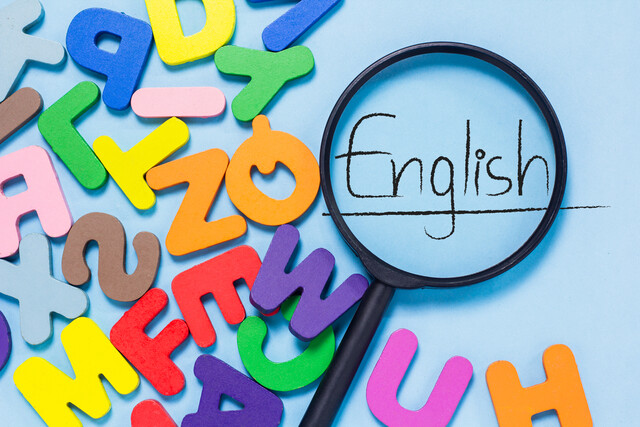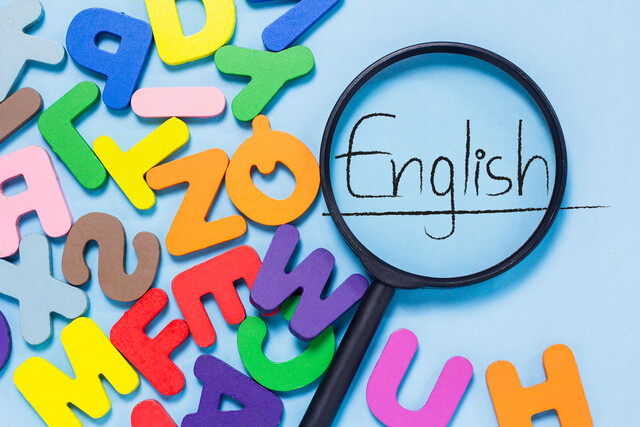We will look at basic classroom techniques such as:
-Grouping and pair work
-TPR (Total Physical Response)
-Student movement
-Changing the pace
-Greeting and warm up
-Boardwork
How to make groups
One good way to quickly make groups is to assign numbers to students and then have them get into groups according to their number.
For example, in a class of ten students, quickly go to each student and say "one" for the first, "two" for the second, "three" for the third, but then "one" again for the fourth, "two" for the fifth, etc. until you reached the tenth student, who will be a "one." Then say "ones, stand up, come over here. Twos, stand up, go over there."
The final result will be one group of four and two groups of three.
In a class of five you can break them into two groups by just counting one and two, which results in two groups, one with three people and one with two people. In a class of fifteen you can use a count of four, which will result in four groups of three to four students.
This technique is not only quick and lively, it also makes random groups that can end up being students who wouldn't normally choose to work together, which challenges them to speak to new people instead of any friends they might have in class.
This is also important because in a class of students from different language backgrounds, students sometimes sit with people they share a common language with; random groups can force these folks to talk with people who don't happen to share their native language, making English the only option.
Open pairs and closed pairs
An open pair is when two students work together on a task in front of the rest of the class. Closed pairs are when all the students in a class are paired up and work on a task in their pairs.
An open pair exercise is often used at the end of the Presentation as a transition to Practice. It can be done quickly to get the students engaged, moving around and alert. You can use an open pair to demonstrate a task that you will later have the class perform in closed pairs.
An example of using open pairs:
You want the students to practice a simple conversation in a beginner class. You have already presented the language they need. You have the questions on the board, but not the answers. The questions are How are you? Where are you from? What is your job? Where do you live? Are you married?
To start the open pair, you indicate one student and say (or use hand gestures to indicate) "stand up." Then indicate another student to do the same. (You can choose at random or you can choose two of the better students so they can successfully model for the other students.)
Then indicate the question on the board to the first student. After the student asks the question, indicate for the second student to answer. Continue like this through all the questions. (Notice that there is minimal or no talking by the teacher in order to encourage maximum speaking by the students.)
After the first two students, you can do it again with two more if necessary. Sometimes you will go through the whole class this way, especially for a smaller class. Or you can follow it up by having the students do the same activity in closed pairs.
You can make closed pairs using the same counting technique mentioned above to make groups.
This time, you count them out so that only two students have the same number. So in a class of ten, count students up to the number five and then start again at number one. In a class of twenty, count student up to number ten and then start again at one, etc.
This will end up with two students who are ones, two that are two, etc. Tell the students, "stand up, ones together, twos together," etc. Have them quickly sit in their new closed pairs.
In the case of an odd number of students, you will end up with one group of three. Encourage that group of three to take turns during the activity
Half and Half
Another classroom technique related to grouping is when the teacher has half the class ask a question while the other half answers it. We saw this in Lesson 1 with the question "Do you like pizza?" and "Yes, I like pizza."
To perform this "halving" technique, you stand in front of the class and with one hand indicate an imaginary line down the middle of the class. With the one hand still indicating the imaginary line, use the other hand to indicate one side of the class and say "Do you like pizza?" using the technique to get that half of the class to repeat. Then with that one hand indicate the other side and say "Yes, I like pizza."
As soon as they get it, keep indicating each half to ask and answer, several times. You can just indicate to the left and right at this point.
Then stand in front of the class, indicate both sides with both your hands, and then cross your hands to indicate a switch. Sometimes they will get it immediately and the two halves will switch roles in asking and answering. Sometimes the side that's supposed to ask the question will need a new prompting.
This technique can be used for all the questions and answers of the target language. It's good for practice and for keeping the students engaged and on their toes; it should be done quickly and energetically.
Total Physical Response
Simply put, TPR (Total Physical Response) is the idea that if students do something physical as part of learning language, they learn that language much better and quicker.
TPR is definitely a vital technique. It's almost goes without saying that students acting out the words are going to better remember the words, as compared to only memorizing meanings or even translating from their native language.
Sometimes TPR is considered best for younger learners and/or lower-level students, but you should use it every chance you get. TPR can be used to teach words for parts of the body, to teach giving directions, to teach prepositions of place, and much more.
When using TPR, make sure the students have plenty of room to move around. TPR can involve students all coming to the front of the class, or moving their desks out of the way.
Some examples of TPR:
-Teaching imperative sentences. One student commands another student or the whole rest of the class: "Stand up. Go to the window. Go back to your desk. Pick up your pen." This could also be adapted into an exercise of the game Simon Says.
-Giving directions. The assignment might be to direct another student to a place in the class that only the first student knows: "First, turn left. Now go straight." A fun alternative is to label different parts of the class as streets and places so the students have to say "Turn left at the bank," etc.
-Daily routines. One student acts out an assigned activity while the class has to guess what activity it is, like "to get dressed."
-Charades. This activity is described in detail in Lesson 8 on phrasal verbs, but you can use it for any classroom lesson with a variety of grammar.
Get up, stand up: student movement
Besides TPR techniques, It's always good to have your students do more than just sit in their chairs during the whole class. Teaching is full of opportunities to get students on their feet or changing places. Some examples that we have touched on:
-two students at a time standing momentarily while you do the open pair work.
-longer paired activities, like the practice in imperatives where one student tells another to go, stop, turn right, etc.
-the whole class rearranging themselves for closed pair work
-group activities that involve all the students milling about, like an exercise where students interview each other.
Therefore, pair work and grouping techniques are not just practical ways to get students to practice. They are also ways to get students moving, to enliven the class.
Always incorporate at least some movement like this in your lesson plan. At the very least, your Practice or Production will usually involve an exercise that can be done in closed pairs that you can assign at random, so the students get up and move to sit with their partner for the exercise.
Changing it up
Though we have emphasized PPP methodology as a good structure that helps students engage while feeling secure in the reliability of the classroom pattern, it's always good to surprise students with a different type of class every now and then, so that the structure doesn't get too predictable.
In this case, you can throw PPP out the window for one classroom lesson and design something completely different. You can do a class where the students design and perform short plays that use a particular grammar focus. You can do an activity like "Deserted Island" that we discuss in Lesson 9.
You can line up several fun exercises that focus on what they have learned in previous lessons instead of presenting something brand new.
Later on this course, you will learn some classroom lesson plans and activities that don't strictly follow PPP methodology and can be used for a change in pace in your classroom lessons.
Greetings and ice breakers
While it may be obvious that you should start an English class with some form of greeting and some way to warm up the class, the type of greeting will depend on the level of your class.
This is not always obvious to a new teacher. For example, even saying "Hello, how are you?" is not appropriate on the first day if your students are all absolute beginners who don't know how to answer with a simple "fine," and you don't want to start off the class with something that will right away make the students feel like they don't know what they should know.
The first couple minutes of the class should always involve some simple but lively engagement of the students before the teacher plunges into the PPP methodology.
A well-prepared lesson plan will take into account the greeting and warm up. Ideally, it should be a continuation and reinforcement of what the students learned in their previous class, and what they have done for their homework.
If, for example, the previous lesson was about the verb "to like," and you have already taught the student the word "weather," the next class could be started off with "Hello. Do you like the weather today?" This breaks the ice at the beginning of the class and gets the students ready to engage.
Boardwork
Boardwork is the teaching term for how you use the chalkboard, whiteboard, or whatever kind of board you have in class. In a one-to-one lesson without a board, it's how you write things on a pad of paper for your student.
Boardwork should be planned in advance of a classroom lesson so you don't end up with a mess that will confuse students.
Clear boardwork is why, when presenting vocabulary, we write nouns, verbs, adjectives and adverbs, expressions etc. grouped together in their own spaces on the board:
a train easy slowly to work
a plane difficult quickly to sweat
(expressions)
to roll up your sleeves
the last straw
On using incorrect examples in exercise
A subject of debate in teaching ESL concerns the use of exercises that include mistakes or grammatically incorrect sentences. These exercises are designed for students to pick the grammatically correct sentence, to choose the word spelled correctly, to spot and correct a mistake, etc.
Sometimes a teacher will do activities of "what's wrong with my sentence?" where the teacher intentionally speaks incorrectly in order for the students to correct them.
For example, in a class on comparisons they might ask students what is wrong when the teachers says "My mother is the oldest than me."
Others think this is a big mistake, because exposing students to a grammatically incorrect sentence, whether it's written in an exercise or spoken by the teacher, runs the risk of imprinting this bad English as an option somewhere in the student's brain.
After years of teaching, I have decided that it is bad form to ever model bad English, either in written or verbal form, in any exercise. If I'm using a textbook that includes this kind of exercise, I skip it. You should too.























